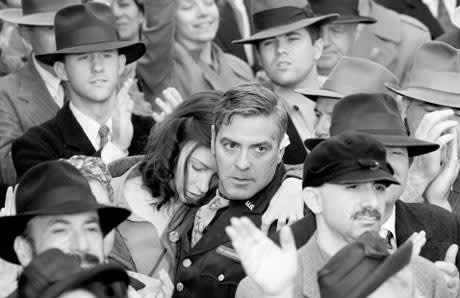The Good German is Steven Soderberghs slavish love letter to the noir films of the 40s. Soderbergh was so determined to recreate the authentic feel of films like Casablanca and The Third Man that he used all sorts of self-imposed, old-fashioned, atavistic shooting techniques and technologies. However, Soderbergh would have been much better served putting that effort into the plot. Jake Geismer (George Clooney) is a journalist in occupied, post-war Berlin covering the meeting of Stalin, Truman and Churchill at the Potsdam negotiations. Jake soon discovers his driver is involved in the black market and his pre-war lover, Lena (Cate Blanchett), is making ends meet as a "working girl. Lenas involved in something big, so big the Russians and the Americans both want her, and Jake realises he can trust no one. Its a free-for-all in post-war Berlin and everyone is out for themselves, with the theme of self-preservation at any cost permeating everyones actions. The Russians are plundering their new European territories, while the Americans, with the dawning of the Cold War, are working their own angle. As part of Operation Overcast/Paperclip (this is absolutely true), the Americans are absolving Nazis of their very real sins to import them as rocket scientists. All the players are dirty and at times, the plot seems like a vehicle to expose the atrocities and transgressions of the era there doesnt actually appear to be any good Germans, or humans. Soderbergh attempts to recreate the moral ambiguity of classic noir films but ends up with characters that are either too calculating to be relatable or too two-dimensional to care about. He may have been trying to recapture it but Jake and Lenas tainted love is barren of the corny alchemy that Rick and Ilsa shared in Casablanca.
(Warner)The Good German
Steven Soderbergh

BY Matt McMillanPublished May 25, 2007